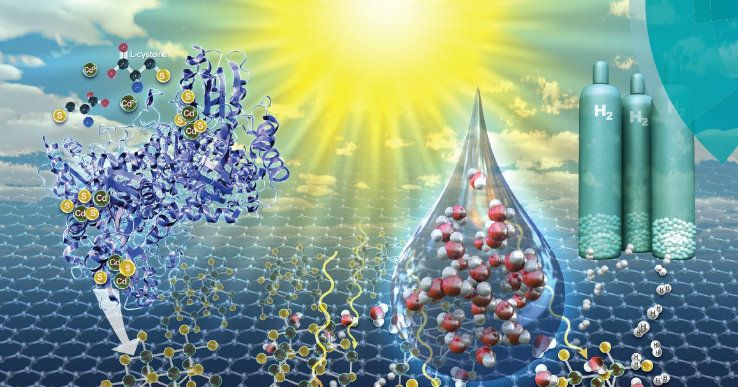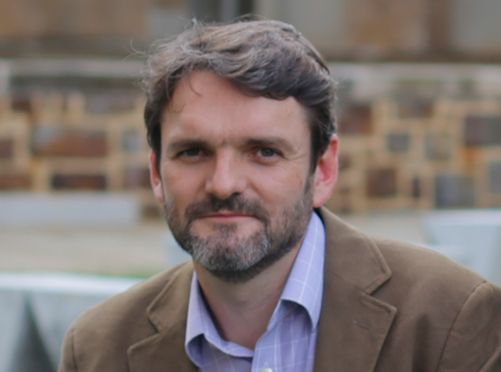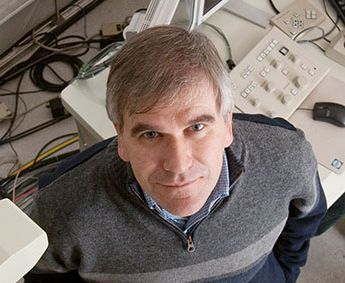Lehigh engineers are the first to utilize a single enzyme biomineralization process to create a catalyst that uses the energy of captured sunlight to split water molecules to produce hydrogen. The synthesis process is performed at room temperature and under ambient pressure, overcoming the sustainability and scalability challenges of previously reported methods.
Solar-driven water splitting is a promising route towards a renewable energy-based economy. The generated hydrogen could serve as both a transportation fuel and a critical chemical feedstock for fertilizer and chemical production. Both of these sectors currently contribute a large fraction of total greenhouse gas emissions.
One of the challenges to realizing the promise of solar-driven energy production is that, while the required water is an abundant resource, previously-explored methods utilize complex routes that require environmentally-damaging solvents and massive amounts of energy to produce at large scale. The expense and harm to the environment have made these methods unworkable as a long-term solution.
Now a team of engineers at Lehigh have harnessed a biomineralization approach to synthesizing both quantum confined nanoparticle metal sulfide particles and the supporting reduced graphene oxide material to create a photocatalyst that splits water to form hydrogen. The team reported their results in an article entitled: “Enzymatic synthesis of supported CdS quantum dot/reduced graphene oxide photocatalysts” featured on the cover of the August 7 issue of Green Chemistry, a journal of the Royal Society of Chemistry.
The team behind paper includes: first author Leah Spangler '18PhD, now a postdoctoral researcher with the Scholes Lab at Princeton University; Steven McIntosh, a professor in Lehigh's Department of Chemical and Biomolecular Engineering who served as Spangler's PhD advisor; current PhD student John D. Sakizadeh; Christopher J. Kiely, Harold B. Chambers Senior Professor in the Department of Materials Science and Engineering; and, Joseph P. Cline, a PhD student working with Kiely.
“Our water-based process represents a scalable green route for the production of this promising photocatalyst technology,” says McIntosh, who is also associate director of Lehigh’s Institute for Functional Materials and Devices.
Read the full story in the Lehigh University News Center.
Story by Lori Friedman



